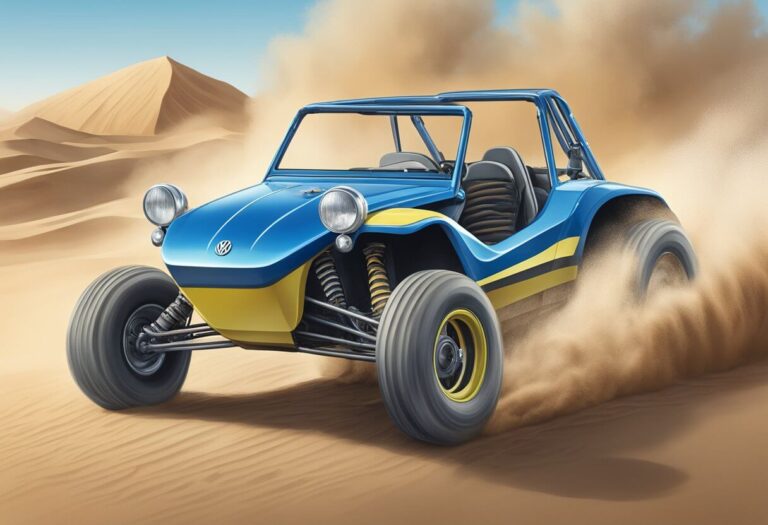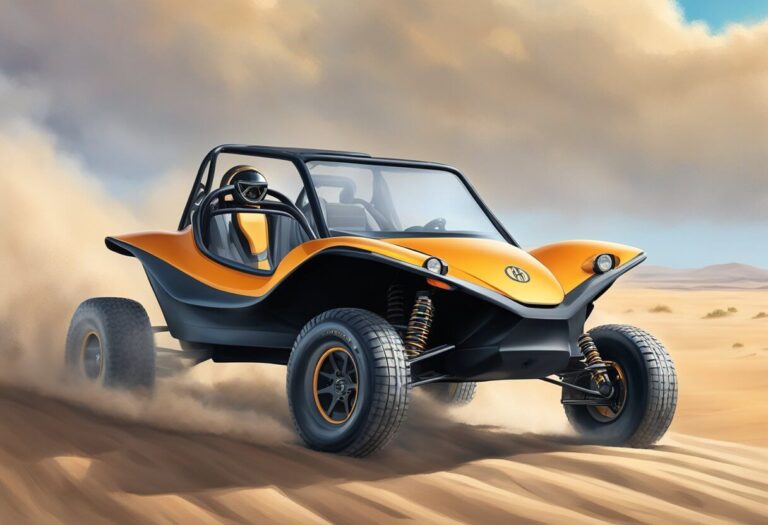Meyers Manx Dune Buggy: A Classic Off-Road Vehicle

The Meyers Manx dune buggy is an iconic vehicle that has been around for over half a century. It was first designed in 1963 by Bruce F. Meyers, a surfer, engineer, and boat maker from California. Meyers wanted to create a lightweight, high-performance vehicle that could handle the sand dunes of Southern California, and he succeeded in creating a vehicle that has become a legend in the off-road community.
The Meyers Manx is based on the Volkswagen Beetle chassis, but it features a fiberglass body that is designed to be lightweight and durable. The suspension and drivetrain are also modified to provide better off-road performance. The vehicle quickly became popular among off-road enthusiasts, and it has been used in a variety of applications over the years, including desert racing, rock crawling, and general off-road recreation.
Today, the Meyers Manx is still being produced by the Meyers Manx Company, which was founded by Bruce Meyers himself. The company offers a range of models, including the Classic, the Kick-Out, and the Tow’d, each with its own unique features and capabilities. The Meyers Manx has become a symbol of freedom and adventure, and it continues to inspire off-road enthusiasts around the world.
History of Meyers Manx
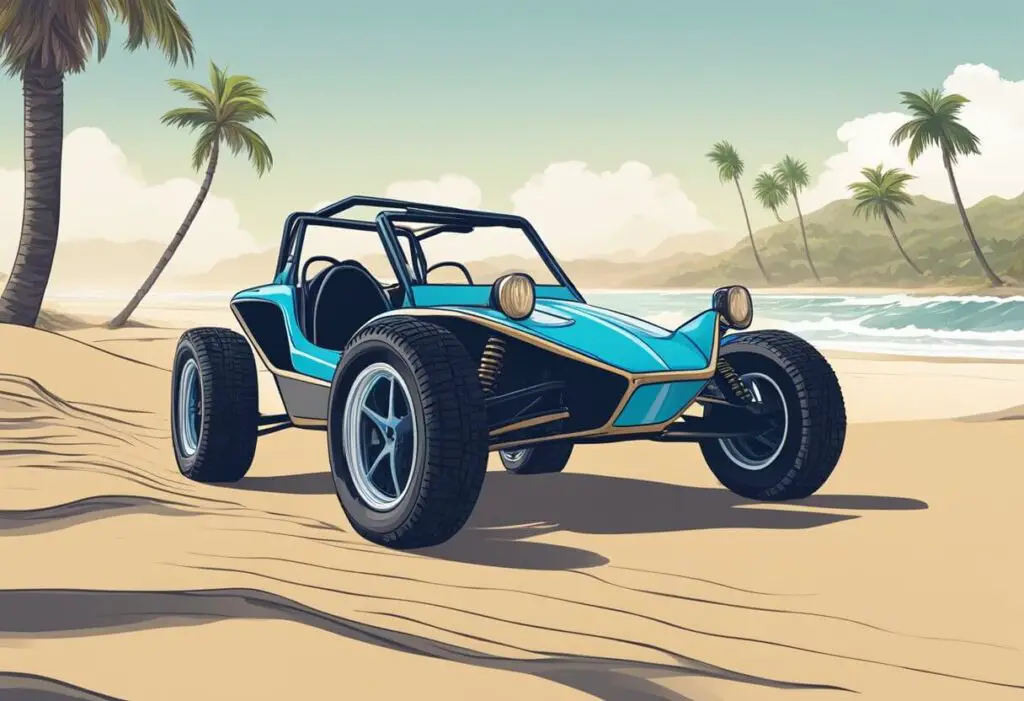
Creation and Design
The Meyers Manx dune buggy was created by Bruce Meyers in the late 1963s. Drawing on his experience in sailboat construction, Meyers designed and built his first dune buggy, called “Old Red,” in his garage in Newport Beach, California. The Old Red was a shortened VW Beetle with a monocoque fiberglass shell and Chevrolet pickup truck suspension. The design was intended to be a lightweight, high-performance vehicle that could handle the rough terrain of the Southern California desert.
Meyers’ dune buggy design quickly gained popularity among off-road enthusiasts, and he began producing the Manx commercially in 1964. The Manx was characterized by its distinctive fiberglass body, which featured a high, rounded hood and a short, sloping rear deck. The Manx was designed to be easily assembled and disassembled, making it popular among amateur builders.
Popularity and Cultural Impact
The Meyers Manx quickly became a cultural icon of the 1960s and 1970s, appearing in movies, TV shows, and advertisements. The Manx was featured in the opening credits of the TV show “The Beverly Hillbillies,” and it was driven by Steve McQueen in the movie “The Thomas Crown Affair.” The Manx also appeared in numerous magazines and was featured on the cover of Hot Rod Magazine in August 1966.
The Manx’s popularity was due in part to its versatility. The vehicle could be used for off-road racing, beach cruising, and general transportation. The Manx was also relatively affordable, making it accessible to a wide range of consumers.
Evolution and Variants
Over the years, the Meyers Manx has undergone numerous design changes and variations. In the late 1960s, Meyers introduced the Manx SR, which featured a longer wheelbase and a more aerodynamic body. In the 1970s, Meyers introduced the Manx II, which featured a more angular body and a longer wheelbase.
Today, there are numerous companies producing Meyers Manx replicas and variations. These replicas range from faithful reproductions of the original Manx to highly modified, custom-built vehicles. Despite the many changes and variations, the Meyers Manx remains an enduring symbol of the Southern California dune buggy culture of the 1960s and 1970s.
Technical Specifications
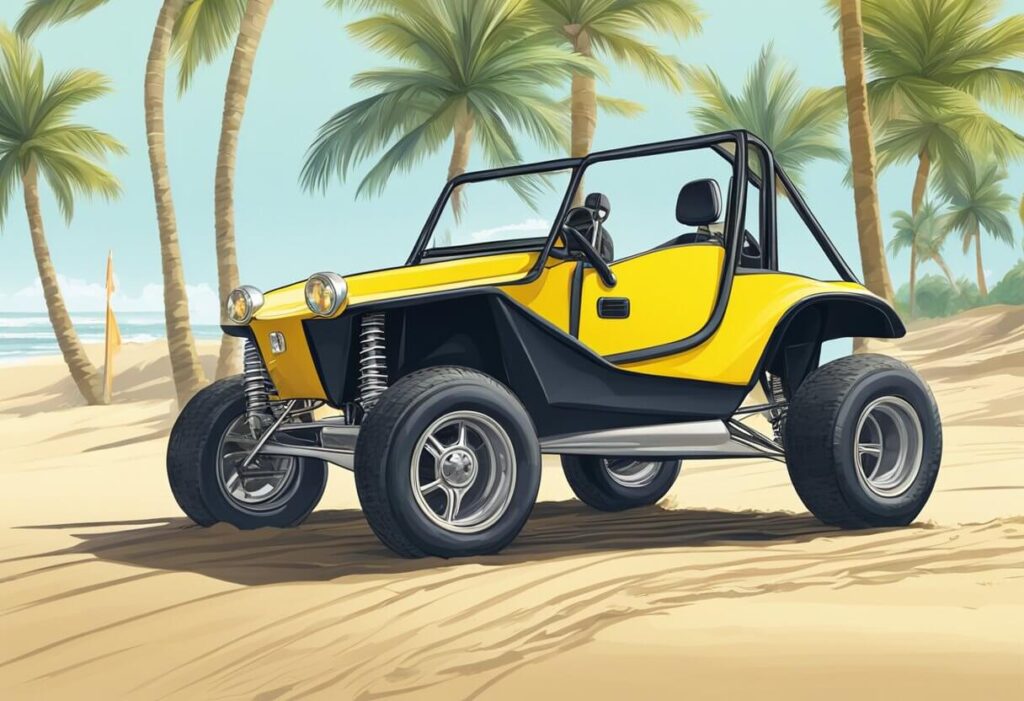
Engine and Performance
The Meyers Manx Dune Buggy is powered by a Volkswagen air-cooled engine. The original model had a 1.2-liter engine, which produced 40 horsepower and 62 lb-ft of torque. Later models were equipped with larger engines, such as the 2-liter engine that produced 130 horsepower and 130 lb-ft of torque. The engine is paired with a four-speed manual transmission.
The Meyers Manx has a top speed of around 70 miles per hour and can accelerate from 0 to 60 miles per hour in around 10 seconds. Its light weight and low center of gravity make it a nimble and fun vehicle to drive off-road.
Chassis and Construction
The Meyers Manx features a fiberglass body that is mounted on a shortened Volkswagen Beetle chassis. The body is designed with compound curves that provide rigidity and strength. The body, fenders, and frame are fused into a unibody shell, while the engine, transmission, and other mechanical components are retained from the VW Beetle.
The suspension system features independent front and rear torsion bar suspension, which provides a smooth ride on rough terrain. The Manx also features four-wheel drum brakes for stopping power.
Dimensions and Weight
The Meyers Manx 2.0 has a wheelbase of 82 inches and an overall length of 123.5 inches. It is 70.3 inches wide and 53.3 inches tall. The vehicle weighs approximately 1,500 pounds, making it a lightweight and agile off-road machine.
Overall, the Meyers Manx Dune Buggy is a unique and fun vehicle that combines classic Volkswagen engineering with a fiberglass body that is both lightweight and durable. Its simple design and off-road capabilities make it a popular choice for off-road enthusiasts and collectors alike.
Restoration and Maintenance

Finding Replacement Parts
Restoring a Meyers Manx dune buggy can be a challenging task, especially when it comes to finding replacement parts. Due to the age of these vehicles, some parts may be difficult to locate. However, there are a few options for finding replacement parts. One option is to search online auction sites or classified ads for used parts. Another option is to contact a Meyers Manx specialist who may have access to rare or hard-to-find parts. It is important to ensure that any replacement parts are authentic and in good condition to maintain the integrity of the vehicle.
Common Restoration Challenges
Restoring a Meyers Manx dune buggy can present several challenges. One common challenge is rust, which can be caused by exposure to moisture and salt. Rust can weaken the structural integrity of the vehicle and compromise its safety. Another challenge is the condition of the fiberglass body. Over time, the body can become brittle and crack, which may require repairs or replacement. Additionally, the wiring and electrical components of the vehicle may need to be updated to ensure proper functioning.
Maintenance Tips
Proper maintenance is key to keeping a Meyers Manx dune buggy in good condition. Regular cleaning and waxing can help protect the fiberglass body from damage and maintain its shine. It is also important to check the oil, brakes, and other mechanical components regularly to ensure they are in good working order. Any issues should be addressed promptly to prevent further damage or safety concerns. Storing the vehicle in a dry, covered area can also help prevent rust and other damage caused by exposure to the elements.
Customization
Meyers Manx dune buggies offer a wide range of customization options to suit the preferences of different drivers. Here are some popular customization options:
Body Modifications
The Meyers Manx dune buggy is known for its unique and iconic design. However, some drivers prefer to modify the body to suit their personal style. Body modifications can include changes to the shape, size, and color of the body. For example, some drivers may opt for a different color scheme or add custom graphics to the body. Others may modify the body to make it wider or longer for improved stability and performance.
Performance Upgrades
Meyers Manx dune buggies are designed to be driven on both on and off-road terrains. Drivers can enhance the performance of their dune buggies by upgrading various components such as the engine, suspension, and brakes. For example, installing a high-performance engine can increase the speed and power of the dune buggy. Upgrading the suspension can improve handling and stability on rough terrains, while upgrading the brakes can increase stopping power.
Personalization
Personalization is an important aspect of customization for Meyers Manx dune buggies. Drivers can add various accessories and features to make their dune buggies unique and personalized. For example, adding a custom steering wheel or seat covers can add a touch of personality to the vehicle. Other popular accessories include sound systems, lighting, and storage compartments.
Overall, Meyers Manx dune buggies offer a great platform for customization, allowing drivers to create a vehicle that perfectly suits their needs and preferences. With a wide range of customization options available, drivers can create a unique and personalized dune buggy that stands out from the crowd.
Meyers Manx in Motorsport
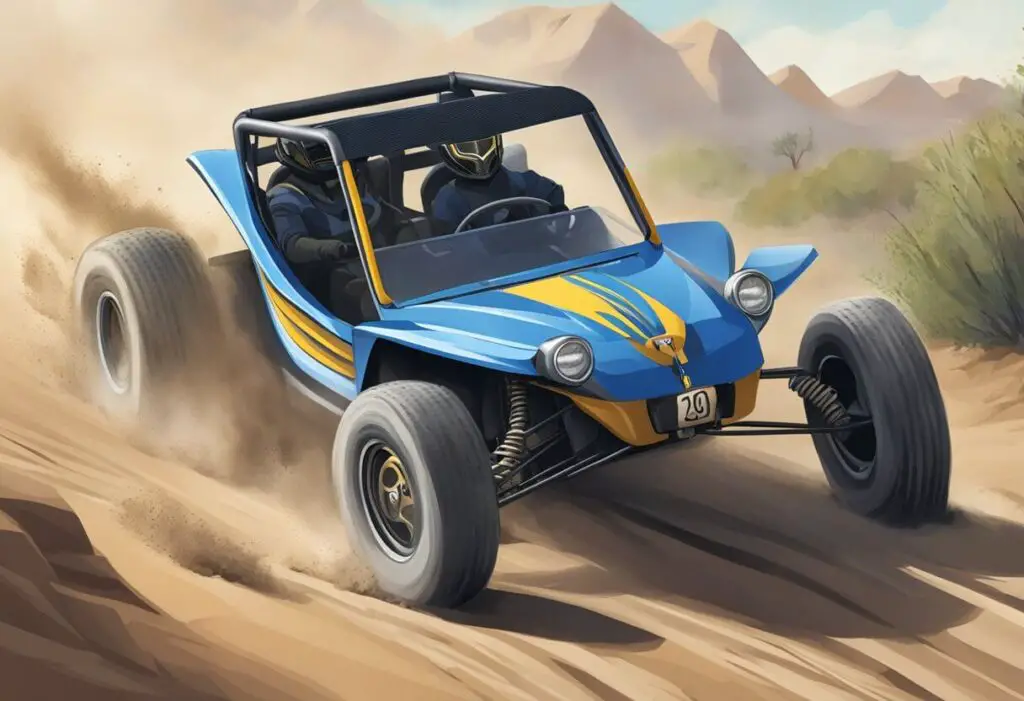
Racing History
The Meyers Manx dune buggy has a rich history in motorsport. Bruce Meyers himself famously won the inaugural Mexican 1000 race in 1967, which later became the Baja 1000. The Manx quickly became a popular choice for off-road racing due to its lightweight design and impressive performance.
Notable Achievements
The Meyers Manx has achieved numerous victories and accolades in off-road racing throughout the years. In addition to Bruce Meyers’ historic win at the Baja 1000, the Manx has also won the Baja 500 and Mint 400 races. The Manx has even been inducted into the Off-Road Motorsports Hall of Fame.
Current Competitions
While the Meyers Manx may not be as prominent in modern off-road racing, it still has a loyal following among enthusiasts and collectors. The Manx is often seen at vintage off-road events and rallies, where it continues to impress with its performance and style. There are also a number of Manx-specific races and events held throughout the year, such as the Manx Club’s annual “Manx on the Banx” event in North Carolina.
Buying a Meyers Manx
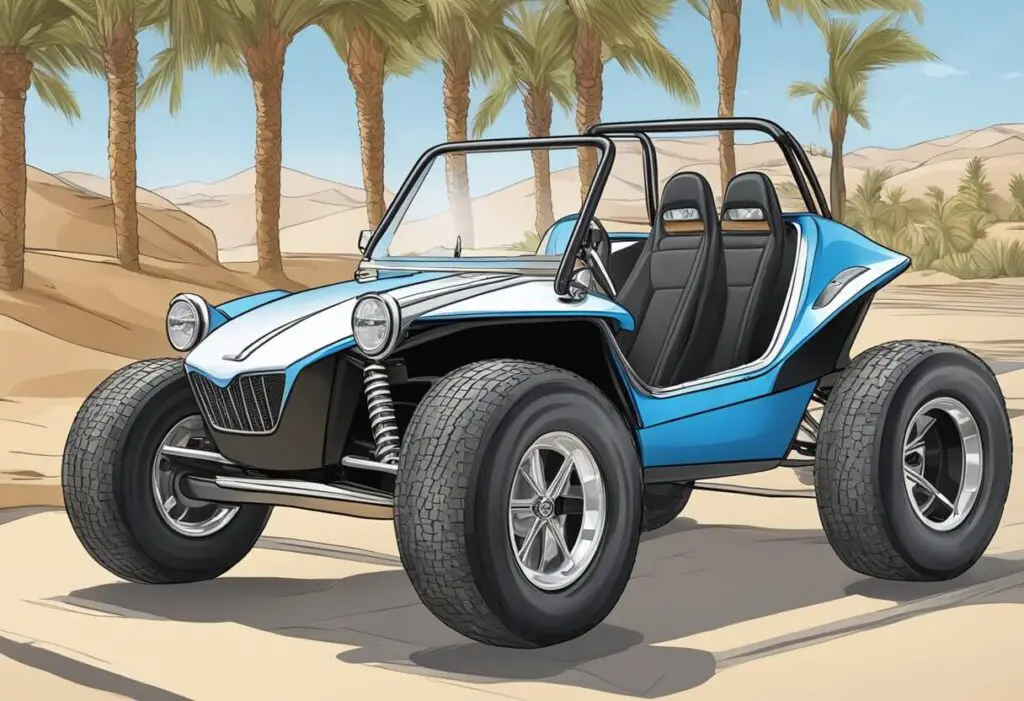
Market Trends
Meyers Manx dune buggies have been around for over five decades and are still popular among car enthusiasts. The market trends show that there is a high demand for these vehicles, which can make them expensive to purchase. However, the price can vary depending on the condition, year, and model of the buggy. Some of the most sought-after models include the original Manx, the Manxter, and the Kick-Out.
Inspection Checklist
Before purchasing a Meyers Manx, it’s important to thoroughly inspect the vehicle to ensure it’s in good condition. Here is a checklist of items to look for:
- Check the body for any cracks or damage to the fiberglass.
- Examine the frame for any rust or corrosion.
- Test the brakes and suspension to ensure they are functioning properly.
- Check the tires for wear and tear.
- Inspect the engine for any leaks or signs of damage.
Ownership Costs
Owning a Meyers Manx can come with additional costs beyond the purchase price. Here are some potential ownership costs to consider:
- Insurance: Due to the unique nature of the Meyers Manx, insurance can be more expensive than for a standard vehicle.
- Maintenance: Regular maintenance is necessary to keep the vehicle in good condition. This can include oil changes, tire replacements, and brake repairs.
- Modifications: Many Meyers Manx owners enjoy customizing their buggies with additional features, which can add to the overall cost of ownership.
Overall, purchasing a Meyers Manx can be a rewarding experience for car enthusiasts. By following a thorough inspection checklist and considering potential ownership costs, buyers can ensure they are making an informed decision.
Community and Culture
Clubs and Organizations
The Meyers Manx dune buggy has a vibrant community of enthusiasts who come together to share their passion for this iconic vehicle. There are several clubs and organizations dedicated to preserving the history and promoting the use of the Meyers Manx.
One such organization is the Manx Club, which was founded in 1995 and has since grown to become the largest Meyers Manx club in the world. The club hosts annual events and gatherings where members can showcase their vehicles, swap stories, and learn more about the history of the Meyers Manx.
Events and Gatherings
In addition to club events, there are also several independent gatherings and rallies that celebrate the Meyers Manx. One of the most popular of these is the Baja Bug Club’s Manx on the Banx, which takes place each year on the beaches of Cape Cod.
This event attracts hundreds of Meyers Manx owners and enthusiasts from around the country, who come together to show off their vehicles and participate in beach drives, parades, and other activities.
Online Forums and Resources
For those who can’t attend physical events, there are also several online forums and resources dedicated to the Meyers Manx. These forums provide a space for enthusiasts to connect, share information, and ask questions.
One popular forum is the Meyers Manx Club Forum, which is run by the Manx Club and features discussions on topics ranging from technical issues to restoration tips. There are also several Facebook groups dedicated to the Meyers Manx, which provide a more casual space for enthusiasts to share photos and stories.
Frequently Asked Questions
What is the price range for a Meyers Manx dune buggy?
The price range for a Meyers Manx dune buggy can vary depending on the model and condition. However, a fully restored Meyers Manx dune buggy can cost anywhere from $9,900 to $36,278.
Where can I find a Meyers Manx dune buggy for sale?
Meyers Manx dune buggies can be found for sale through various online marketplaces such as eBay, Craigslist, and specialty car dealerships. It is also possible to find Meyers Manx dune buggies at car auctions.
What are the specifications of the Meyers Manx dune buggy?
The Meyers Manx dune buggy is a small, lightweight vehicle designed for off-road use. It typically features a fiberglass body mounted on a shortened Volkswagen Beetle chassis. The vehicle is powered by a rear-mounted air-cooled Volkswagen engine and typically has a 4-speed manual transmission. The Meyers Manx dune buggy has a top speed of around 80 miles per hour.
How many Meyers Manx dune buggies were originally produced?
It is estimated that around 6,000 Meyers Manx dune buggies were produced between 1964 and 1971. However, due to the popularity of the vehicle, many replicas and kit cars have been produced since then.
Is it legal to drive a Meyers Manx on public roads?
In most states, it is legal to drive a Meyers Manx on public roads as long as the vehicle meets the required safety standards and is registered and insured. However, regulations may vary depending on the state or country.
What options are available for Meyers Manx dune buggy kits and parts?
Meyers Manx offers a variety of kits and parts for building or restoring a Meyers Manx dune buggy. These include complete fiberglass bodies, chassis, suspension components, and engine parts. There are also many third-party vendors who offer aftermarket parts and accessories for the Meyers Manx dune buggy.

